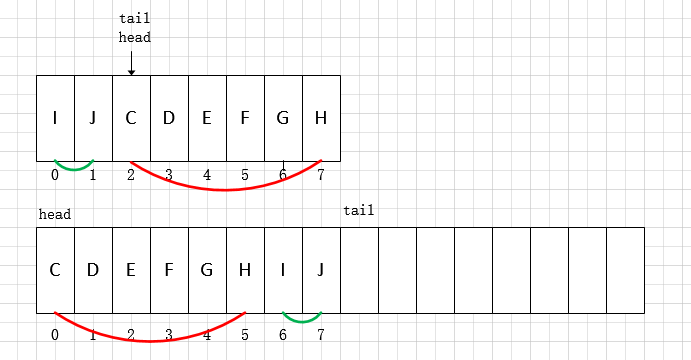- 【Java源码阅读系列44】深度解读Java NIO ByteBuffer 源码
·云扬·
源码阅读系列之Javajavanio开发语言
JavaNIO(NewInput/Output)中的ByteBuffer是Buffer抽象类的具体子类,专门用于处理字节数据的高效读写。作为NIO的核心组件,ByteBuffer支持堆内存(Heap)和直接内存(Direct)两种存储方式,广泛应用于网络通信、文件IO等场景。本文将结合源码,深入解析ByteBuffer的核心机制、关键方法及设计模式的应用。一、ByteBuffer的核心特性与存储方
- SpringBoot+MySQL旅游资源管理系统Java源码
幽络源小助理
springbootvue.js后端springjava
概述基于SpringBoot+MySQL开发的旅游资源管理系统完整源码,该系统功能完善,包含从景点管理到路线推荐的全流程解决方案,采用主流技术栈开发,代码规范易于二次开发,是学习SpringBoot项目实战的优秀范例。主要内容前台功能展示系统前台设计简洁实用,主要包含以下核心功能模块:导航菜单:首页、在线留言、公告消息、景点资讯、景点信息、酒店信息、个人中心搜索功能:支持关键词搜索旅游景点和酒店信
- maven-compiler-plugin 3.10.1 与 3.8.1
IT界的奇葩
mavenjava
maven-compiler-plugin是Maven用于编译Java源码的插件,不同版本之间的主要差异体现在以下方面:支持的JDK版本、新增功能、Bug修复以及与Maven的兼容性。以下是3.10.1与3.8.1的主要区别:1.支持的JDK版本MavenCompilerPlugin3.8.1支持JDK8到JDK12。对更高版本的JDK(如JDK13及以上)的支持有限。如果使用更高版本的JDK,可
- 【Java源码阅读系列33】深度解读Java FilterReader 源码
·云扬·
源码阅读系列之Javajava开发语言
FilterReader是JavaI/O体系中字符输入流的核心抽象类,位于java.io包下。它与FilterWriter(字符输出流)、FilterOutputStream(字节输出流)共同构成JavaI/O的「装饰器模式」基础框架,旨在通过动态组合扩展字符输入流的功能。本文将结合源码,从类结构、设计模式、核心方法实现等角度,深入解析FilterReader的设计思想。一、类定义与核心结构1.类
- Java基础 集合框架 队列架构 双端队列 Deque
骑牛小道士
集合框架之队列java开发语言
双端队列DequeDeque方法简介Deque核心特点Deque实现类ArrayDequeArrayDeque构造方法ArrayDeque的数据结构及实现原理ArrayDeque方法介绍ArrayDeque核心特性ArrayDeque总结ArrayDeque使用样例代码Deque实现类LinkedListDeque实现类ConcurrentLinkedDeque(非阻塞线程安全)Concurren
- 【Java源码阅读系列28】深度解读Java CompletableFuture 源码
·云扬·
源码阅读系列之Javajava开发语言
Java8引入的CompletableFuture是并发编程中处理异步任务的核心工具,它通过实现Future和CompletionStage接口,提供了链式调用、任务组合、异常处理等强大功能。本文将结合源码,深入解析其核心机制、设计模式,并给出常见使用场景与代码示例。一、核心架构:状态管理与依赖任务CompletableFuture的核心目标是将异步任务的完成状态与依赖操作解耦,允许通过链式调用定
- 【Java源码阅读系列27】深度解读Java ThreadPoolExecutor 源码
·云扬·
源码阅读系列之Javajava开发语言
Java的ThreadPoolExecutor是并发编程中处理任务执行的核心类,广泛应用于异步任务调度、批量数据处理等场景。本文将从源码层面解析其核心机制,提炼设计模式,并结合实际场景给出使用示例。一、线程池核心架构:状态管理与核心参数1.1状态压缩与原子控制:ctl变量ThreadPoolExecutor通过一个原子整数ctl(类型为AtomicInteger)同时管理线程池状态(runStat
- 【Java源码阅读系列19】深度解读Java AtomicReference 源码
·云扬·
源码阅读系列之Javajava开发语言jvm
AtomicReference是Javajava.util.concurrent.atomic包中的核心类之一,用于在多线程环境下实现线程安全的对象引用原子操作。本文将结合JDK8源码,从底层实现、核心方法、设计模式等角度深入解析其原理。一、类定义与核心字段1.类泛型与继承AtomicReference是泛型类(表示引用对象的类型),实现了java.io.Serializable(支持序列化):p
- 医疗科技行业企业网站开发实战:JAVA源码全面解析
任我心意
本文还有配套的精品资源,点击获取简介:本文档介绍了一套基于Java技术开发的医疗科技企业网站源码,详述了Java在网站开发中的语言特性、优势、Web开发框架、数据库管理、前端技术、安全性和持续集成部署的实践应用。通过这套源码,开发者可以快速构建出用户体验良好、功能完善的官方网站,以提升医疗科技企业的网络形象和业务效率。1.JAVA医疗科技行业企业网站源码概述概述Java作为一种广泛应用于企业级开发
- 同城校园外卖系统Java源码:便捷点餐与商家管理实现
以下是基于Java的同城校园外卖系统源码实现方案,聚焦便捷点餐流程与商家管理功能的核心代码与架构设计,结合实际校园场景优化用户体验和商家运营效率。一、便捷点餐功能实现1.核心流程设计用户端操作路径:首页推荐→搜索/筛选商家→浏览菜单→加入购物车→提交订单→支付→订单跟踪2.关键代码实现(1)商家与菜品快速检索java//商家服务类(支持按校区、分类、销量筛选)@Servicepublicclass
- 【Java源码阅读系列5】深度解析StringBuilder与StringBuffer源码
·云扬·
源码阅读系列之Javajavapython开发语言
在Java中处理字符串拼接时,StringBuilder与StringBuffer是最常用的工具类。它们的核心作用都是可变字符序列的高效操作,但二者的设计定位却有本质差异。本文将从源码层面深入解析两者的实现逻辑,并总结其适用场景。一、类继承关系与核心设计1.1共同父类:AbstractStringBuilderStringBuilder与StringBuffer均继承自抽象类AbstractStr
- java八股总结
你不困我困
java
Java的特点:平台无关性:Java编译器将源代码编译成字节码,字节码可以在任何安装了Java虚拟机(JVM)的系统上运行;面向对象:OOP特性使得代码更易于维护和重用;内存管理:Java有自己的垃圾回收机制,自动管理内存和回收不再使用的对象(具体见问题34),开发者不需要手动管理内存,减少了内存泄漏和其他内存相关的问题。Java为什么是跨平台的?主要依赖于JVM编写的Java源码编译后会生成一种
- kafka-生产者-(day-4)
不倒翁^1
kafka分布式
day-3BufferPool产生原因:ByteBuffer的创建和释放都是比较耗费资源的,为了实现内存的高效利用,产生了他。他会对特定大小的ByteBuffer进行管理BufferPool的字段free:是一个ArrayDeque队列,缓存指定大小的ByteBuffer对象ReentrantLock:因为这个BufferPool在多线程中使用,保证其安全waiters:这个队列中包含小空间导致阻
- 同城拼车打车约车系统:Java源码全开源构建与优化
源码库saaskw
微信小程序小程序微信公众平台
同城拼车系统是一个复杂且功能全面的软件系统,它巧妙地运用互联网技术,将具有相同出行需求的乘客与车主进行精准匹配,旨在实现资源的最大化共享、显著降低出行成本、有效缓解交通拥堵问题,并大幅提升出行效率。Java,作为一种功能强大、应用广泛的编程语言,凭借其出色的跨平台性、丰富的API库以及强大的性能,成为开发此类系统的理想选择。一、Java源码构建系统架构MVC架构:同城拼车系统采用MVC(Model
- springboot基于高可用集群的校园博客的搭建与实现源码毕设+论文
Django计算机程序
springboot课程设计后端
本系统(程序+源码)带文档lw万字以上文末可获取一份本项目的java源码和数据库参考。系统程序文件列表开题报告内容研究背景随着互联网技术的飞速发展,校园信息化建设日益成为提升教育质量和学生学习体验的重要手段。博客作为一种便捷的信息发布和交流平台,在校园环境中具有广泛的应用价值。然而,传统的校园博客系统往往面临着服务器单点故障、数据安全性低、并发访问能力差等问题,难以满足日益增长的用户需求和高并发的
- Java中栈的实现类详解:Stack、LinkedList与ArrayDeque全方位对比
AA-代码批发V哥
JavaSEjava
Java中栈的实现类详解:Stack、LinkedList与ArrayDeque全方位对比前言一、Stack类——Java最早的栈实现1.1Stack类简介1.2常用方法1.3优缺点分析二、LinkedList类——灵活的双端链表2.1LinkedList类简介2.2常用方法2.3优缺点分析三、ArrayDeque类——高性能的现代选择3.1ArrayDeque类简介3.2常用方法3.3优缺点分析
- 【华为OD】C卷真题 200分:最长子字符串的长度(二) C/C++实现
五木大大
算法java数据结构c++c语言华为od开发语言
python代码实现:【华为OD】C卷真题200分:最长子字符串的长度(二)Python实现-CSDN博客纯C语言实现:【华为OD】C卷真题200分:最长子字符串的长度(二)C语言代码实现-CSDN博客java代码实现:【华为OD】C卷真题200分:最长子字符串的长度(二)Java源码实现-CSDN博客题目描述:给你一个字符串s,字符串s首尾相连成一个环形&#x
- Java源码:优先队列PriorityQueue
wotusy
一、类继承关系publicclassPriorityQueueextendsAbstractQueueimplementsjava.io.Serializable{PriorityQueue只实现抽象队列抽象类,即实现队列接口。二、类属性//默认初始化容量privatestaticfinalintDEFAULT_INITIAL_CAPACITY=11;//通过完全二叉树(completebinar
- 【Java源码】优先队列PriorityQueue
_Volcano_我是火山君
Java源码
优先队列的作用:优先队列的作用是保证每次取出的元素是队列中权值最小的。Java中,优先队列ProrityQueue的本质是通过一颗完全二叉树来实现小根堆。其中,父节点和子节点之间的关系是:leftNo=parentNo*2+1rightNo=parentNo*2+2parentNo=(nodeNo-1)/2优先队列的常见方法:1)offer:往队列中加元素,在插入失败时抛出异常。add:往队列中加
- Java源码分析String为什么是不可变的
☞精◈彩◈猿◈笔◈记☜
JavaString为什么是不可变的String是不可变的String
Java源码分析String为什么是不可变的?不可变:如果一个对象,在它创建完成之后,不能再改变它的状态,那么这个对象就是不可变的。不能改变状态:指的是不能改变对象内的成员变量,包括基本数据类型的值不能改变,引用类型的变量不能指向其他的对象,并且引用类型指向的对象的状态也不能改变。1.String类源码分析通过String类源码可知:String底层是由char数组构成,当创建一个字符串对象时,实
- mysql 链接关闭虚引用未清理引擎 JVM内存升高问题及解决
慧一居士
mysqljvm数据库
目录1、现象2、mysql-connector-java源码分析3、解决方法3.1、配置disableAbandonedConnectionCleanup3.2、暴力解决方式-----定时GC4、什么是虚引用5、关联对象真的被回收了吗6、虚引用的使用场景——mysql-connector-java虚引用源码分析7、参考:1、现象最近发现,服务器内存一直在增加,dump内存后发现com.mysql.
- OCP开闭原则来获取配置文件内容
叻了
开闭原则java
目前实现的功能就是只需要把配置文件放在src根目录下,就能用文件名读取到文件中的key&value主要的代码就是获取这个文件的绝对路径,不会因为文件路径的改变从而去修改Java源码。1、getPath()方式packageorg.example.reflect;importjava.io.InputStream;importjava.util.Properties;publicclassIoPro
- 深入理解位运算以及位运算在Java源码中的运用
Zach_ZSZ
计算机原理算法java位运算计算机底层原理
一、什么是位运算程序中的数在计算机中都是以二进制形式存储,位运算就是直接对整数在内存中的二进制位进行操作,位运算包括位逻辑运算和移位运算,位逻辑运算能够方便设置或屏蔽某个字节的一位或几位,也可以对两个数按位相加,移位运算可以对内存中某个二进制左移或右移几位二、Java中提供的七种位运算2.1、位运算核心操作位运算符名称含义举例&按位与将参与运算的两个二进制数进行&与运算,如果两个二进制位都是1,则
- 【二叉树】java源码实现
火龙谷
算法数据结构
BiTree是BinaryTree的缩写,中文意思是二叉树Node.javapublicclassNode{publicTdata;publicNodeleft;publicNoderight;publicNode(Tdata,Nodeleft,Noderight){this.data=data;this.left=left;this.right=right;}publicNode(Tdata){
- Java双端队列(Deque)作为栈和队列的用法详解
吗喽对你问好
java开发语言双端队列Deque
Deque(双端队列)是Java集合框架中的一个接口,它同时支持栈(LIFO)和队列(FIFO)的操作。以下是ArrayDeque(常用实现类)的详细方法示例:1.双端队列作为栈(LIFO)栈的特点是后进先出,对应Deque的以下方法:栈操作Deque等效方法说明push(e)addFirst(e)或offerFirst(e)元素压入栈顶pop()removeFirst()或pollFirst()
- 计算机毕业设计springboot出租车服务管理信息系统01nn59【附源码+数据库+部署+LW】
黑白゛计算机毕设源码程序
课程设计springboot数据库
本项目包含程序+源码+数据库+LW+调试部署环境,文末可获取一份本项目的java源码和数据库参考。系统的选题背景和意义选题背景:随着城市化进程的加快和人口的增长,出租车服务在现代城市中扮演着重要的角色。然而,传统的出租车服务管理方式存在一些问题,如信息不透明、调度效率低下、服务质量无法保证等。为了解决这些问题,需要引入现代化的技术手段来改进出租车服务管理系统。SpringBoot作为一种快速开发框
- 计算机毕业设计springboot基于微信小程序的牙科预约系统的设计与实现bqyy8【附源码】
林少Java毕设程序源码
课程设计springboot微信小程序
本项目包含程序+源码+数据库+LW+调试部署环境,文末可获取一份本项目的java源码和数据库参考。系统的选题背景和意义选题背景:随着互联网的快速发展和智能手机的普及,移动应用程序成为人们生活中不可或缺的一部分。微信小程序作为一种轻量级的应用形式,具有便捷、快速、跨平台等特点,受到了广大用户的喜爱。而牙科预约系统作为一种方便患者与牙医之间进行沟通和预约的工具,也逐渐受到了关注。意义:设计和实现基于微
- 02-Java 类加载机制与破坏及其源码分析
Pasregret
Java核心基础与进阶机制java开发语言后端
Java类加载机制与破坏及其源码分析本文深入探讨Java的类加载机制,包括双亲委派模型、类加载器的实现、破坏与绕过方式、源码实现与常见面试要点。一、类从何而来:Java类加载过程简述Java源码.java被编译为.class文件后,并不会立即加载到JVM中,而是在运行时按需加载。类的加载过程主要包括以下五个阶段:加载(Loading)验证(Verification)准备(Preparation)解
- 基于微信小程序的校园二手物品交易系统(开题报告+源码)
基努毕设程序
微信小程序小程序
本系统(程序+源码)带文档lw万字以上文末可获取一份本项目的java源码和数据库参考。系统程序文件列表开题报告内容研究背景:随着校园内学生群体对于物品流转的需求日益增长,二手交易成为了一种既环保又经济的选择。然而,现有的校园二手交易方式存在着交易效率低、信息不对称、安全性无法保障等问题。微信小程序作为一种新型的移动应用形式,具有易传播、无需安装等优点,非常适合用于构建校园二手物品交易平台,以数字化
- 【Java源码】基于SpringBoot+Vue的人事管理系统
编程毕设
javaspringbootvue.js
1项目介绍本课程演示的是一套基于SpringBoot+Vue的人事管理系统,主要针对计算机相关专业的正在做毕设的学生与需要项目实战练习的Java学习者。包含:项目源码、项目文档、数据库脚本、软件工具等所有资料带你从零开始部署运行本套系统该项目附带的源码资料可作为毕设使用该系统基于springboot+vue打造的一款公司人事管理系统,人事管理系统功能包括人事通讯,员工信息,人事考评,奖惩,培训管理
- 如何用ruby来写hadoop的mapreduce并生成jar包
wudixiaotie
mapreduce
ruby来写hadoop的mapreduce,我用的方法是rubydoop。怎么配置环境呢:
1.安装rvm:
不说了 网上有
2.安装ruby:
由于我以前是做ruby的,所以习惯性的先安装了ruby,起码调试起来比jruby快多了。
3.安装jruby:
rvm install jruby然后等待安
- java编程思想 -- 访问控制权限
百合不是茶
java访问控制权限单例模式
访问权限是java中一个比较中要的知识点,它规定者什么方法可以访问,什么不可以访问
一:包访问权限;
自定义包:
package com.wj.control;
//包
public class Demo {
//定义一个无参的方法
public void DemoPackage(){
System.out.println("调用
- [生物与医学]请审慎食用小龙虾
comsci
生物
现在的餐馆里面出售的小龙虾,有一些是在野外捕捉的,这些小龙虾身体里面可能带有某些病毒和细菌,人食用以后可能会导致一些疾病,严重的甚至会死亡.....
所以,参加聚餐的时候,最好不要点小龙虾...就吃养殖的猪肉,牛肉,羊肉和鱼,等动物蛋白质
- org.apache.jasper.JasperException: Unable to compile class for JSP:
商人shang
maven2.2jdk1.8
环境: jdk1.8 maven tomcat7-maven-plugin 2.0
原因: tomcat7-maven-plugin 2.0 不知吃 jdk 1.8,换成 tomcat7-maven-plugin 2.2就行,即
<plugin>
- 你的垃圾你处理掉了吗?GC
oloz
GC
前序:本人菜鸟,此文研究学习来自网络,各位牛牛多指教
1.垃圾收集算法的核心思想
Java语言建立了垃圾收集机制,用以跟踪正在使用的对象和发现并回收不再使用(引用)的对象。该机制可以有效防范动态内存分配中可能发生的两个危险:因内存垃圾过多而引发的内存耗尽,以及不恰当的内存释放所造成的内存非法引用。
垃圾收集算法的核心思想是:对虚拟机可用内存空间,即堆空间中的对象进行识别
- shiro 和 SESSSION
杨白白
shiro
shiro 在web项目里默认使用的是web容器提供的session,也就是说shiro使用的session是web容器产生的,并不是自己产生的,在用于非web环境时可用其他来源代替。在web工程启动的时候它就和容器绑定在了一起,这是通过web.xml里面的shiroFilter实现的。通过session.getSession()方法会在浏览器cokkice产生JESSIONID,当关闭浏览器,此
- 移动互联网终端 淘宝客如何实现盈利
小桔子
移動客戶端淘客淘寶App
2012年淘宝联盟平台为站长和淘宝客带来的分成收入突破30亿元,同比增长100%。而来自移动端的分成达1亿元,其中美丽说、蘑菇街、果库、口袋购物等App运营商分成近5000万元。 可以看出,虽然目前阶段PC端对于淘客而言仍旧是盈利的大头,但移动端已经呈现出爆发之势。而且这个势头将随着智能终端(手机,平板)的加速普及而更加迅猛
- wordpress小工具制作
aichenglong
wordpress小工具
wordpress 使用侧边栏的小工具,很方便调整页面结构
小工具的制作过程
1 在自己的主题文件中新建一个文件夹(如widget),在文件夹中创建一个php(AWP_posts-category.php)
小工具是一个类,想侧边栏一样,还得使用代码注册,他才可以再后台使用,基本的代码一层不变
<?php
class AWP_Post_Category extends WP_Wi
- JS微信分享
AILIKES
js
// 所有功能必须包含在 WeixinApi.ready 中进行
WeixinApi.ready(function(Api) {
// 微信分享的数据
var wxData = {
&nb
- 封装探讨
百合不是茶
JAVA面向对象 封装
//封装 属性 方法 将某些东西包装在一起,通过创建对象或使用静态的方法来调用,称为封装;封装其实就是有选择性地公开或隐藏某些信息,它解决了数据的安全性问题,增加代码的可读性和可维护性
在 Aname类中申明三个属性,将其封装在一个类中:通过对象来调用
例如 1:
//属性 将其设为私有
姓名 name 可以公开
- jquery radio/checkbox change事件不能触发的问题
bijian1013
JavaScriptjquery
我想让radio来控制当前我选择的是机动车还是特种车,如下所示:
<html>
<head>
<script src="http://ajax.googleapis.com/ajax/libs/jquery/1.7.1/jquery.min.js" type="text/javascript"><
- AngularJS中安全性措施
bijian1013
JavaScriptAngularJS安全性XSRFJSON漏洞
在使用web应用中,安全性是应该首要考虑的一个问题。AngularJS提供了一些辅助机制,用来防护来自两个常见攻击方向的网络攻击。
一.JSON漏洞
当使用一个GET请求获取JSON数组信息的时候(尤其是当这一信息非常敏感,
- [Maven学习笔记九]Maven发布web项目
bit1129
maven
基于Maven的web项目的标准项目结构
user-project
user-core
user-service
user-web
src
- 【Hive七】Hive用户自定义聚合函数(UDAF)
bit1129
hive
用户自定义聚合函数,用户提供的多个入参通过聚合计算(求和、求最大值、求最小值)得到一个聚合计算结果的函数。
问题:UDF也可以提供输入多个参数然后输出一个结果的运算,比如加法运算add(3,5),add这个UDF需要实现UDF的evaluate方法,那么UDF和UDAF的实质分别究竟是什么?
Double evaluate(Double a, Double b)
- 通过 nginx-lua 给 Nginx 增加 OAuth 支持
ronin47
前言:我们使用Nginx的Lua中间件建立了OAuth2认证和授权层。如果你也有此打算,阅读下面的文档,实现自动化并获得收益。SeatGeek 在过去几年中取得了发展,我们已经积累了不少针对各种任务的不同管理接口。我们通常为新的展示需求创建新模块,比如我们自己的博客、图表等。我们还定期开发内部工具来处理诸如部署、可视化操作及事件处理等事务。在处理这些事务中,我们使用了几个不同的接口来认证:
&n
- 利用tomcat-redis-session-manager做session同步时自定义类对象属性保存不上的解决方法
bsr1983
session
在利用tomcat-redis-session-manager做session同步时,遇到了在session保存一个自定义对象时,修改该对象中的某个属性,session未进行序列化,属性没有被存储到redis中。 在 tomcat-redis-session-manager的github上有如下说明: Session Change Tracking
As noted in the &qu
- 《代码大全》表驱动法-Table Driven Approach-1
bylijinnan
java算法
关于Table Driven Approach的一篇非常好的文章:
http://www.codeproject.com/Articles/42732/Table-driven-Approach
package com.ljn.base;
import java.util.Random;
public class TableDriven {
public
- Sybase封锁原理
chicony
Sybase
昨天在操作Sybase IQ12.7时意外操作造成了数据库表锁定,不能删除被锁定表数据也不能往其中写入数据。由于着急往该表抽入数据,因此立马着手解决该表的解锁问题。 无奈此前没有接触过Sybase IQ12.7这套数据库产品,加之当时已属于下班时间无法求助于支持人员支持,因此只有借助搜索引擎强大的
- java异常处理机制
CrazyMizzz
java
java异常关键字有以下几个,分别为 try catch final throw throws
他们的定义分别为
try: Opening exception-handling statement.
catch: Captures the exception.
finally: Runs its code before terminating
- hive 数据插入DML语法汇总
daizj
hiveDML数据插入
Hive的数据插入DML语法汇总1、Loading files into tables语法:1) LOAD DATA [LOCAL] INPATH 'filepath' [OVERWRITE] INTO TABLE tablename [PARTITION (partcol1=val1, partcol2=val2 ...)]解释:1)、上面命令执行环境为hive客户端环境下: hive>l
- 工厂设计模式
dcj3sjt126com
设计模式
使用设计模式是促进最佳实践和良好设计的好办法。设计模式可以提供针对常见的编程问题的灵活的解决方案。 工厂模式
工厂模式(Factory)允许你在代码执行时实例化对象。它之所以被称为工厂模式是因为它负责“生产”对象。工厂方法的参数是你要生成的对象对应的类名称。
Example #1 调用工厂方法(带参数)
<?phpclass Example{
- mysql字符串查找函数
dcj3sjt126com
mysql
FIND_IN_SET(str,strlist)
假如字符串str 在由N 子链组成的字符串列表strlist 中,则返回值的范围在1到 N 之间。一个字符串列表就是一个由一些被‘,’符号分开的自链组成的字符串。如果第一个参数是一个常数字符串,而第二个是type SET列,则 FIND_IN_SET() 函数被优化,使用比特计算。如果str不在strlist 或st
- jvm内存管理
easterfly
jvm
一、JVM堆内存的划分
分为年轻代和年老代。年轻代又分为三部分:一个eden,两个survivor。
工作过程是这样的:e区空间满了后,执行minor gc,存活下来的对象放入s0, 对s0仍会进行minor gc,存活下来的的对象放入s1中,对s1同样执行minor gc,依旧存活的对象就放入年老代中;
年老代满了之后会执行major gc,这个是stop the word模式,执行
- CentOS-6.3安装配置JDK-8
gengzg
centos
JAVA_HOME=/usr/java/jdk1.8.0_45
JRE_HOME=/usr/java/jdk1.8.0_45/jre
PATH=$PATH:$JAVA_HOME/bin:$JRE_HOME/bin
CLASSPATH=.:$JAVA_HOME/lib/dt.jar:$JAVA_HOME/lib/tools.jar:$JRE_HOME/lib
export JAVA_HOME
- 【转】关于web路径的获取方法
huangyc1210
Web路径
假定你的web application 名称为news,你在浏览器中输入请求路径: http://localhost:8080/news/main/list.jsp 则执行下面向行代码后打印出如下结果: 1、 System.out.println(request.getContextPath()); //可返回站点的根路径。也就是项
- php里获取第一个中文首字母并排序
远去的渡口
数据结构PHP
很久没来更新博客了,还是觉得工作需要多总结的好。今天来更新一个自己认为比较有成就的问题吧。 最近在做储值结算,需求里结算首页需要按门店的首字母A-Z排序。我的数据结构原本是这样的:
Array
(
[0] => Array
(
[sid] => 2885842
[recetcstoredpay] =&g
- java内部类
hm4123660
java内部类匿名内部类成员内部类方法内部类
在Java中,可以将一个类定义在另一个类里面或者一个方法里面,这样的类称为内部类。内部类仍然是一个独立的类,在编译之后内部类会被编译成独立的.class文件,但是前面冠以外部类的类名和$符号。内部类可以间接解决多继承问题,可以使用内部类继承一个类,外部类继承一个类,实现多继承。
&nb
- Caused by: java.lang.IncompatibleClassChangeError: class org.hibernate.cfg.Exten
zhb8015
maven pom.xml关于hibernate的配置和异常信息如下,查了好多资料,问题还是没有解决。只知道是包冲突,就是不知道是哪个包....遇到这个问题的分享下是怎么解决的。。
maven pom:
<dependency>
<groupId>org.hibernate</groupId>
<ar
- Spark 性能相关参数配置详解-任务调度篇
Stark_Summer
sparkcachecpu任务调度yarn
随着Spark的逐渐成熟完善, 越来越多的可配置参数被添加到Spark中来, 本文试图通过阐述这其中部分参数的工作原理和配置思路, 和大家一起探讨一下如何根据实际场合对Spark进行配置优化。
由于篇幅较长,所以在这里分篇组织,如果要看最新完整的网页版内容,可以戳这里:http://spark-config.readthedocs.org/,主要是便
- css3滤镜
wangkeheng
htmlcss
经常看到一些网站的底部有一些灰色的图标,鼠标移入的时候会变亮,开始以为是js操作src或者bg呢,搜索了一下,发现了一个更好的方法:通过css3的滤镜方法。
html代码:
<a href='' class='icon'><img src='utv.jpg' /></a>
css代码:
.icon{-webkit-filter: graysc


